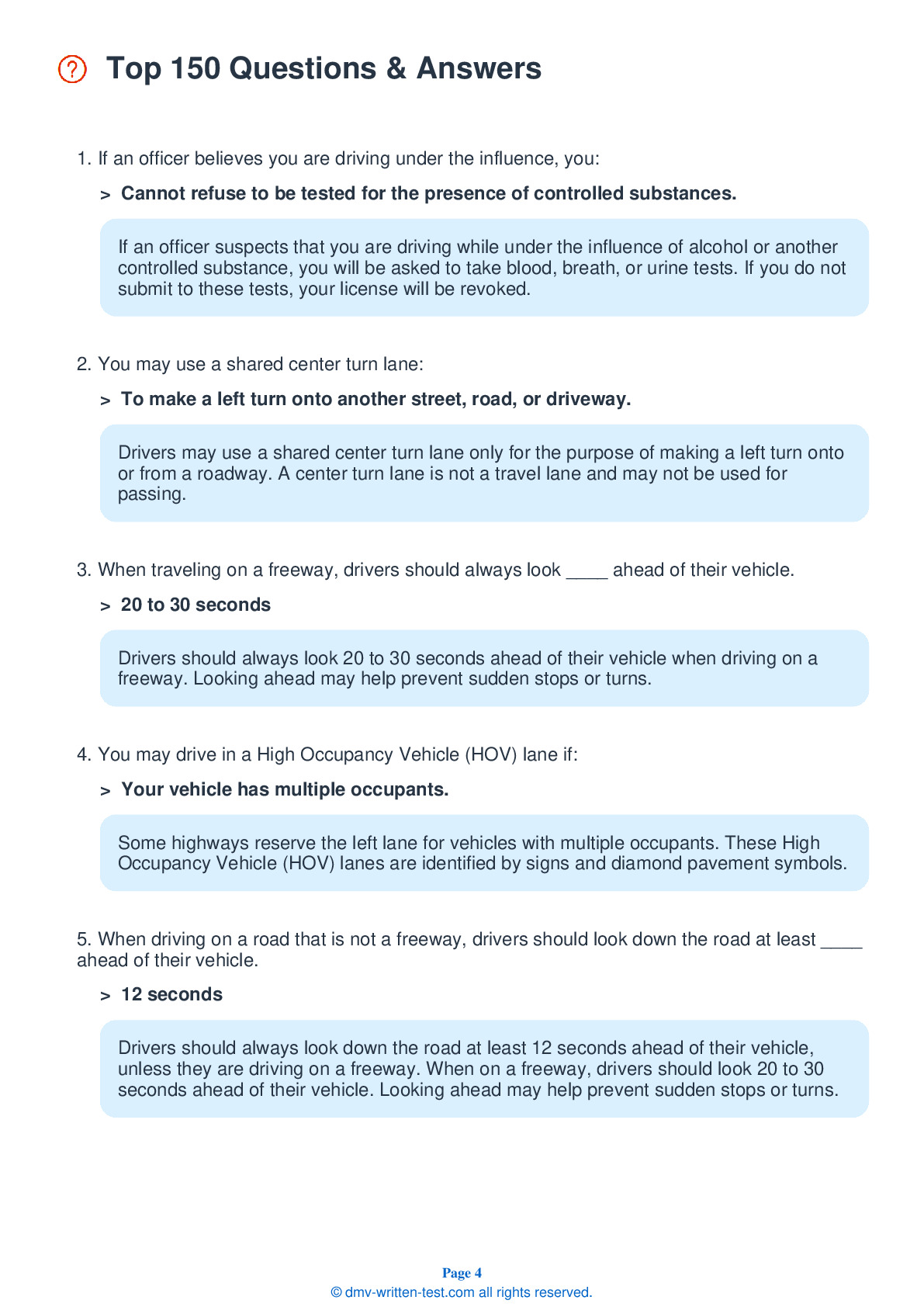2025 Nevada Permit Test 10
The following questions are from real DMV written tests. These are some of the actual permit questions you will face in Nevada. Each permit practice test question has three answer choices. Select one answer for each question and select "grade this section." You can find this button at the bottom of the drivers license quiz. For a complete list of questions and answers for Nevada please visit https://cheat-sheets.dmv-written-test.com/en/nevada/car.
Number of Tests
Number of Question
Passing Score
36. When exiting a highway, you should slow down:
Explanation
When exiting a highway, you should get into the exit lane well in advance. Do not begin to slow down until after you have moved into the exit lane.
37. It is best to keep a space cushion:
Explanation
To ensure that you will have time to react to hazards on the roadway, it is best to keep a cushion of space on all sides of your vehicle. Do not crowd vehicles to your left and right sides.
38. If your car breaks down on a highway, you should:
Explanation
If your vehicle breaks down on the highway, you should signal before carefully exiting the roadway and turning on your hazard flashers. Get as far off the road as possible and park in a location where other drivers can easily see you. Lift your hood to let other drivers know your vehicle is disabled.
39. You are making a left turn from a two-way street onto a one-way street. When you have completed the turn, your car should be:
Explanation
If you are turning left from a two-way street onto a one-way street, you should complete the turn into the lane closest to the lane you have just left.
40. As a pedestrian, you should:
Explanation
Pedestrians should not enter a street or crosswalk when vehicles are approaching. Though pedestrians have the right-of-way in crosswalks, a vehicle approaching from a close distance may not have the time to stop before entering the crosswalk.
41. If driving in fog, a driver should turn on the high beam headlights to increase their field of vision.
Explanation
While it is not advisable to drive in fog, if you must drive in foggy conditions, you should drive with the headlights set on dim or use fog lights.
42. At an intersection with a stop sign, you should stop and:
Explanation




